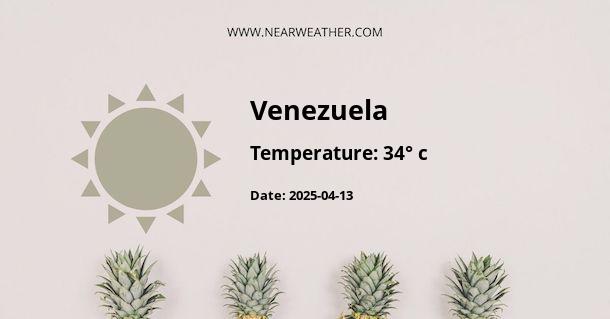Climate and Weather in Venezuela
Venezuela, located on the northern coast of South America, boasts a diverse climate influenced by its proximity to the equator, as well as its varied topography. From its Caribbean coastline to the Andes Mountains, Venezuela experiences a range of climates, making it a fascinating destination for weather enthusiasts.
Overall Climate
Venezuela's climate can be broadly categorized as tropical, with distinct wet and dry seasons. The country experiences little variation in temperature throughout the year due to its proximity to the equator. However, its diverse topography, which includes the Andes Mountains, the Orinoco River basin, and extensive coastline, leads to significant microclimatic variations.
Annual Weather Patterns
Understanding the annual weather patterns in Venezuela is crucial for those planning to visit or live in the country. Let's dive into the specific weather characteristics of the various regions and seasons in Venezuela.
Caribbean Coast
The northern coastline of Venezuela, which borders the Caribbean Sea, experiences a hot and humid tropical climate. The region is characterized by relatively consistent temperatures throughout the year, with average highs ranging from 82°F to 90°F (28°C to 32°C). The wet season typically spans from May to December, with the heaviest rainfall occurring between August and November. During the dry season, from January to April, the region experiences lower humidity and less precipitation.
Andes Mountains
The Andes Mountains in western Venezuela bring cooler temperatures and distinct weather patterns to the region. Due to elevation, the average temperatures range from 57°F to 66°F (14°C to 19°C). The mountainous terrain contributes to variable weather conditions, with the rainy season occurring from May to October. The dry season, from December to April, offers milder temperatures and clearer skies, making it an ideal time to explore the natural beauty of the Andes.
Orinoco River Basin
The vast Orinoco River basin, which covers a significant portion of central and southeastern Venezuela, experiences a tropical savanna climate. The region encounters distinct dry and wet seasons. From December to April, the dry season brings lower humidity and minimal rainfall, while the wet season, spanning from May to November, sees higher precipitation levels and increased humidity.
Extreme Weather Events
While Venezuela's climate is generally stable, the country is susceptible to occasional extreme weather events, including tropical storms and hurricanes. The hurricane season, which runs from June to November, poses a potential risk to coastal areas. It's crucial for residents and visitors to stay informed about weather forecasts and heed any official warnings during this period.
Conclusion
Venezuela's rich and varied climate offers a fascinating tapestry of weather patterns, from tropical coastal environments to the cooler mountain regions. Understanding the seasonal variations and regional climates is essential for anyone looking to explore or reside in this captivating country.
A - Venezuela's Latitude is 8.000000 & Longitude is -66.000000.
A - Weather in Venezuela is 34° today.
A - Climate Conditions in Venezuela shows broken clouds today.
A - Humidity in Venezuela is 32% today.
A - Wind speed in Venezuela is 18.29 km/h, flowing at 131° wind direction. today.
